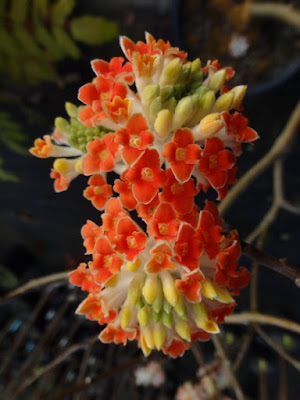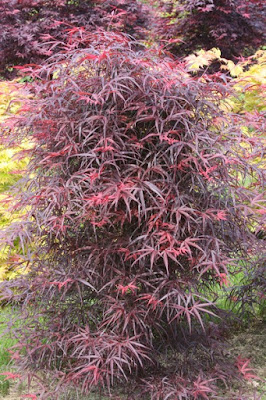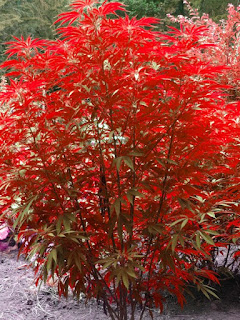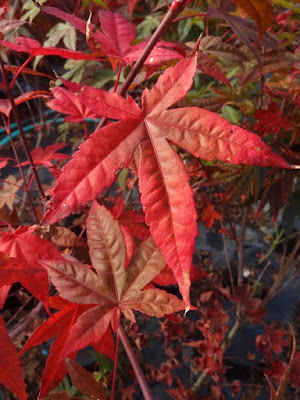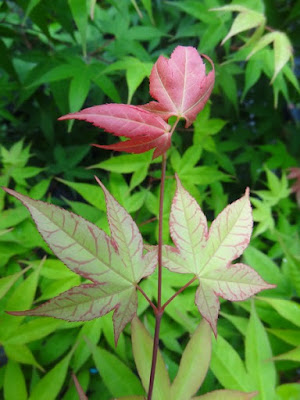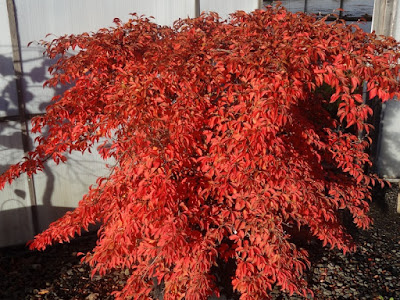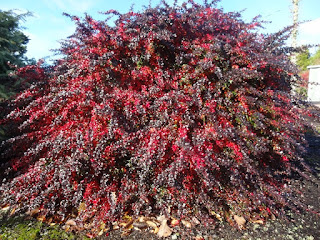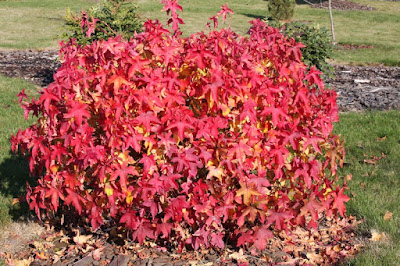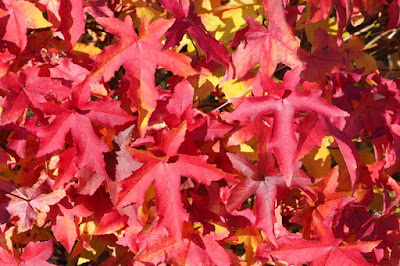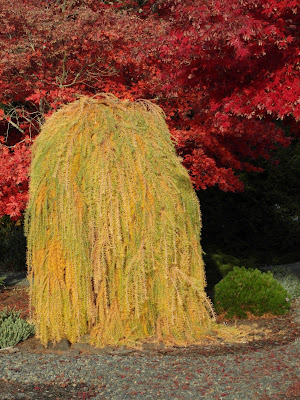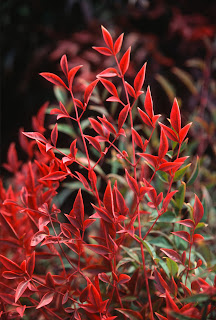Years ago I was asked to give a one-hour class to college horticulture students about grafting, as if one hour was enough. An earnest student inquired if there was a book I could recommend that would aid the novice, and after serious thought I suggested Zen in the Art of Archery...where the practice of aiming at the target was less successful than the archer submitting to, and becoming one with the target. The book (Zen in der Kunst der Bogenschießens) was by the German philosophy professor Eugen Herrigel, published in 1948, and it detailed his experiences studying Kyudo, a form of Japanese archery. The professor lived in Japan in the 1920's, and his book is credited with introducing Zen to Western culture in the 1940's and 50's.
![]()
The Japanese consider archery to be a religious ritual, and the German author admits that “the master knows his pupils better than the pupil knows himself, and through this understanding the master is able to best instruct his subject.” I can certainly say the same about my nursery employees. In the first 20 years of my career I had grafted over a half-million trees*, and thankfully most of them “took,” or were successful. There were times, usually in the night under lights, where my knifing took on a life of its own, and in my mindless state I performed my operations without really being aware that I was grounded and “working.” The grafts just happened, and in the morning I put them into the greenhouse. The following year I was pleased that 80-90% had made it.
*It would have been more but I was also out cutting scions and preparing rootstock.
Early on I did buy The Grafter's Handbook by R.J. Gardner – great name! – which was published in association with The Royal Horticultural Society, and I purchased the 4th edition of 1979. The jacket review by The Guardian states that “Mr. Gardner almost certainly knows more about the vegetative propagation of tree and bush fruit than any man on earth...” After recently receiving The Bench Grafter's Handbook by acquaintance Brian Humphrey, I would suggest that the Englishman Humphrey now reigns as most knowledgeable with ornamental grafting propagation. If only mildly interested, his 600 page tome can easily put you to sleep – just as with Gardner's work – but if the reader can relate on some level to Humphrey's theories and explanations, then he'll find himself well-instructed.
![]()
I knew that the octogenarian Humphrey was researching and planned to write a grafting book, and I apparently piqued his interest a few times with my ramblings in various Flora Wonder Blogs. While in my career I have largely dwelled in an ethereal realm, BH was paying more serious attention to the science of grafting propagation, and his book is a summation of a lifetime of experience. The CRC Press publication (2019) claims: “This book contains information obtained from authentic and highly regarded sources...blah blah blah,” which makes me nervous about anything I may have contributed.
I don't know if I would have labeled Humphrey's book a “handbook,” for that implies that it's small enough to easily fit into one's hand, but at 600+ pages it's not something you'd want to carry around all day, nor would it easily fit into anybody's pocket. But maybe to the British with their peculiar diction, the term “handbook” is appropriate.
I don't know how many readers will digest the book from beginning to end. I assume it was the publisher who states on the back cover, “Containing 500 full color photographs and illustrations, The Bench Grafter's Handbook: Principles and Practice presents exhaustive information on all aspects of bench grafting.” Careful of the wording there, Mr. Publisher, because “exhaustive” and “exhausting” are pretty much the same. Ok, I'm only joking.
![]() |
| The Sir Harold Hillier Arboretum |
I began the book by reading the back cover, then the preface. The latter is a good send off for what follows, with comments such as: “The importance of grafting to the world economy is significant. Grafted plants occupy thousands of hectares of land in many areas.” Humphrey reminds us that, “Historians tell us that the ancient art of grafting may date back four millennia.” Then he reveals a few biographical notes about himself – he doesn't go back quite that far – with the paragraph: “My working life of over 50 years started in 1954 as a lad in a woody plant nursery where I was fortunate enough to have as a foreman a very good knifesman, who learnt his art at the famous nursery of Waterers, in Bagshot, near London. In the early 1960s, an initial two-year session in one of Hillier Nurseries' propagating units specialising in bench grafting further fostered my interest in the whole procedure.” I like Humphrey's purpose, that “The Bench Grafter's Handbook has been written with the intention of providing information based not only on my experience but also on the experience of others.” I wonder if one can be considered a “plantsman” if he/she is not also a propagator. In any case, all genuine plantsmen have benefited from the “experience of others.”
![]()
![]()
Acer nipponicum
As I mentioned earlier, I don't know if the typical reader has the interest or discipline to begin the book on page one, and then to wade through the entire contents until the end. I know that I didn't/don't, for I tackled it fromthe beginning and the end; so like a little kid in a candy store some topics in the table of contents aroused great interest, like “rates of work” at the beginning (described on page 49) or “drying-off pot grown rootstocks” (described on page 108). Then I also indulged in the plant index at the end, where I could go specifically to, say, Acer nipponicum, where I found that Humphrey concurs that Acer nipponicum does not have a suitable rootstock to use for procreation, that A. pseudoplatanus and A. palmatum have both been “suggested,” but that “both have failed here.” Yes, I have wasted my time on them also.
![]() |
| The "golden" Cathaya |
When the index listed Cathaya argyrophylla I hurriedly turned to pages 229 and 524. On page 229 a table listed Conifer Families and Genera – Grafting Times, Cathaya was listed as best grafted in W (Winter). With my heart racing I then turned to page 524, anticipating that Humphrey would reveal the secrets to Cathaya propagation. My spirits sank when the Grafting Table List literally said – for rootstock – “? Pseudotsuga menziesii” and then under comments, “Unproven combination but some grafts have survived 4 years.” Yeah, I know, I have an “alive” graft on Pseudotsuga that is 6 years old, 5' tall now, but I predict that I'll throw it out after a few more years. It just doesn't look right, and in spite of being fertilized the same as my other conifers it appears anemically yellow. What a hoot when a noted conifer specialist saw mine in the back corner of GH25 and said, “Wow, awesome, I didn't know there was a golden cultivar of Cathaya!” “Well,” I replied, “it's not actually...supposedto be golden.”
![]()
Anyway, that's how I have (and will continue) to process Humphrey's book. For me it's great enjoyment, and I only wish that he was my next-door neighbor, that perhaps we could spar and jab with each other – bob-and-weave if you like – and though I would probably lose in the end it would be great satisfaction to win a few rounds, or at least to give him a solid sock in the face. No, actually I should be careful with the spry old Englishman, lest he sue me for plagiarism for copying from his book.
![]() |
| Athrotaxis cupressoides |
...Continuing with genera from his Grafting Table List, with anticipation I encountered Arthrotaxus sp. [sic] which must be species of Athrotaxis, such as cupressoidesand selangoides. Humphrey had warned me earlier that certain plants were mispeled and that hopefully they would be corrected in a future printing. Though listed as a USDA zone 8 plant, Athrotaxis – the correct spelling – cupressoides (David Don) survived 0 degrees F in my Display Garden except that the foliage turned to a brown-green color; by summer however, the “Pencil pine” had resumed its normal green coloration. I received my start of the Tasmanian conifer from the Washington Park Arboretum in Seattle where it had no trouble in that relatively benign coastal location, and I propagated and sold lining-out plants via rooted cuttings. I read somewhere that Athrotaxis was closely related to Sequoiadendron, and how interesting that my first specimen was planted next to a vigorous Sequoiadendron giganteum 'Glaucum'. Unfortunately too close, as the happy “Giant redwood” sucked all of the moisture from the garden area and the Athrotaxis grew unsightly. Since the latter was never a great seller – due to the perceived hardiness issue – I eventually edited it from the garden, and regrettably I don't even have one in the collection anymore (regrettably, kind of like with old girlfriends who either dumped me or I tired of them). After reading about its supposed affinity to Sequoiadendron I grafted some onto that rootstock – geeze, they kind-of look alike also – and a few of the grafts survived. But damn, that was 25-30 years ago, and today I honestly can't remember how the propagules fared. I know that I don't have them anymore, so did they eventually die or did I sell them, or just what? How is it that I cannot remember, especially since I was so fond of the A. cupressoides species? Anyway, Humphrey says that Cryptomeria japonica is a suitable understock...which leads me to wonder about the possibility of Cryptomeria grafted onto Sequoiadendron rootstock, or vice versa. The question is academic, since both genera are easily produced via seed or rooted cuttings. If I won the lottery, which I won't since I never play, I would devote myself to such investigative projects.
![]() |
| Austrocedrus chilensis |
Another wonderful southern-hemisphere conifer is Austrocedrus (southern cedar) chilensis, but I have only seen it in a couple of collection. I acquired it many years ago from the quirky (but now defunct) Heronswood Nursery in Washington state. My one pot quickly went into decline with what looked to be from root rot. Later I saw it at the Bloedel Reserve – a private garden owned by a now-deceased timber baron – and I remember their 6-foot arborvitae-like tree with blue-green foliage looking particularly regal. I thought about snitching a cutting but the timing was wrong, and I never went back in winter to do so. Hmm...let's see what Humphrey says. He reports: “Thuja occidentalis 1+1p 6-8mm or ? Platycladus orientalis.” For comments he writes “Calocedrus decurrens is an alternative rootstock.” Again, I should be awarded the lottery, as I would love to squander the rest of my days experimenting with these types of compatibility relationships.
![]() |
| Abies koreana 'Gait' |
![]() |
| Abies koreana 'Silver Magic' |
...Back to the beginning, in the table of contents, are chapters devoted to Abies, Acer, Aesculus etc. Ok, let's go to page 267 to learn about “Abies (Pinaceae) – Fir.” This chapter begins with the Introduction where Humphrey writes: “Most species are propagated by seed; vegetative propagation by cuttings is suitable for only a few, mostly dwarf types.” I would agree that the dwarf types are the most inclined to root. With Abies koreana though, I have rooted nearly every cultivar, even the upright, faster-growing selections. The blue forms are less successful than the green, yet every one of the blue has had at least some root. When H claims that “propagation by cuttings is suitable for only a few...”, I would maybe agree with “few,” but argue for a rather “large few.”
![]() |
| Abies koreana 'Ice Breaker' graft |
I'm tempted to go side-ways, and into great depth with the above paragraph, but that would certainly put most of you to sleep. Rather I'll proceed to the Abies Grafting Methods section. Humphrey gives short shrift to “type of graft,” “low-grafting placement” and “tying-in” (a band which holds the new graft combination in place). But what caught my attention are these comments: “Sealing Abies grafts is not necessary [I agree] and can be injurious as it prevents exudation of the resinous sap [I never thought about that]. Some grafters favour spacing tie loops widely to allow exudate to flow away.” The last sentence is from personal correspondence with Englishman Guy Meacham who now resides in Oregon and runs the fun Plantmad Nursery. At Buchholz Nursery our most successful conifer to graft is easily the Abies, and it doesn't seem to matter the species, whether dwarf or not, whatever – they just all take. Our practice is to leave no gaps in the tie-up. We begin wrapping from a little above the union and finish a little below, with no part of the tree visible – to exudate – when finished. Curious, right? Why? There is no good explanation, other than that's how I wrapped my first Abies which took, so I never got around to venture otherwise. I will concede that we spend too much on the (unreasonably) costly rubber bands if/when wrapping more sparingly gets the job done, but I've never had any sap issues.
![]()
![]()
Abies concolor 'Sherwood Blue'
At the end of the Abies section is a photograph of a new graft of Abies pinsapo 'Aurea' and of Abies concolor 'Sherwood Blue'. I was surprised to see the Sherwood selection – I didn't suppose that it had ever made its way to Europe. I first encountered it in the garden of the late Dr. Bump of Forest Grove, Oregon. It had no name, if I recall correctly, but plantsman Bump said he got it from the noted nurseryman, Andy Sherwood of Oregon. I cut a few scions from Bump's tree and labeled them 'Sherwood Blue', so I guess the name has stuck. For the record, the famous Sherwood had at least two sons. One was in the nursery business, but went bankrupt and screwed a number of fellow nurserymen. The other was our family dentist, so both sons were disliked. And full disclosure: I am somehow and distantly related to them; nevertheless my mother always griped that we had to pay too much for dental procedures, that there should be at least some “family” discount.
![]() |
| Maples under poly tent |
One final thought about the Abies section is photographs of grafts in poly tents at two English nurseries. For what it's worth, we never cover our Abies grafts, although we do cover Pinus, Picea and others. But for Abies, why go to the trouble and waste the plastic? They'll grow anyway.
![]() |
| Acer campestre 'Carnival' |
![]()
Acer miyabei
There's a lot of meat on the bone for the Chapter Acer (Sapindaceae) – Maple, but first I'll pick at the observation: “The linkage between graft compatible A. campestre and A. miyabei is one of the most highly supported relationships within the phylogenetic work.” That's obvious to even non-scientists because the two species look very alike and both feature interesting furrowed trunks at maturity. I grew about 20 Acer miyabei from seed, but though large and well-branched they didn't sell, so I top-grafted 10-20 scions onto each tree with Acer campestre 'Carnival', and, three years later, those absolutely sold.
![]() |
| Acer x coriaceum |
The maple chapter contains a blessing, a Graft Compatibility by Species chart, an update of what the late J.D. Vertrees did 35 years ago. For example, for Acer x coriaceum the preferred rootstock is A. monspessulanum, followed by A. pseudoplatanus. Then H. notes: “Not successful here on pseudoplatanus. Surviving for some years on monspessulanum but significant suckering.” So, I guess you either root the “Leather-leaf maple” or grow it from seed.
![]() |
| Acer fabri |
Humphrey's compatibility chart contains some surprises, such as with Acer fabri grafted onto Acer palmatum as the preference, and Acer buergerianum as the secondary choice. The comment section was blank to my dismay. I would have absolutely betted against that combination; besides it almost implies that Acer palmatum and Acer buergerianum are graft compatible. But as I learned with sports: if team A beats team B, and B beats C, then of course (by Aristotelian logic) team A should beat team C, except it doesn't always turn out that way. But maybe A. palmatum and A. buergerianum are compatible; I don't think they are, but I've never tried it.
![]() |
| Acer fabri |
I flirted with A. fabri for about fifteen years, and we used to root them. Sales were weak for the USDA zone 8 plant, but I enjoyed pointing to my largest specimen – kept in the greenhouse – and ask visitors to guess the genus. Very few could – most thought it was a laurel or ficus – and then I would gleefully point to the samaras and announce that it was a maple. I especially admired the rich mahogany-colored new growth, but when my specimen grew too large for the greenhouse I sold it to California and I don't have it anymore. The evergreen species was collected by Ernst Faber in southeastern China in 1887. Being “evergreen” is not always a good attribute for a tree, and in the case of A. fabri the tired, unsightly old leaves would persist throughout winter, and only drop when new growth pushed them off the following spring. One particular plantsman saw my specimen, after being unable to identify it, then declared, “Oh well, I don't need another esotericplant.”
![]() |
| Brian Humphrey |
I think you can tell that I'm well-pleased with my copy of the Bench Grafter's, plus it was kindly signed by Mr. Humphrey. My copy will stay near, but I'm already wearing it out with use. The author is highly regarded in horticulture where his “chairmanship of the UK ornamental nursery industry research and development initiatives with the UK Ministry of Agriculture led to the award of an O.B.E. (Order of the British Empire) in 1987. In 2013, his work in the nursery stock industry and in various RHS projects was recognised by the award of the VMH (Victoria Medal of Honour) by the Royal Horticultural Society.”
![]() |
| Julie Humphrey |
At the end of Acknowledgements, Mr. Brian E. Humphrey thanks his children for their assistance, then writes: “Since the days we met as students at Kew Gardens, my wife Julie has given unwavering support and help. My heartfelt thanks and dedication of this book go to her.” After reading that, I admit to welling-up a little, for I too have been fortunate with a supportive wife.








































































































































































































































































































































































































































































































































